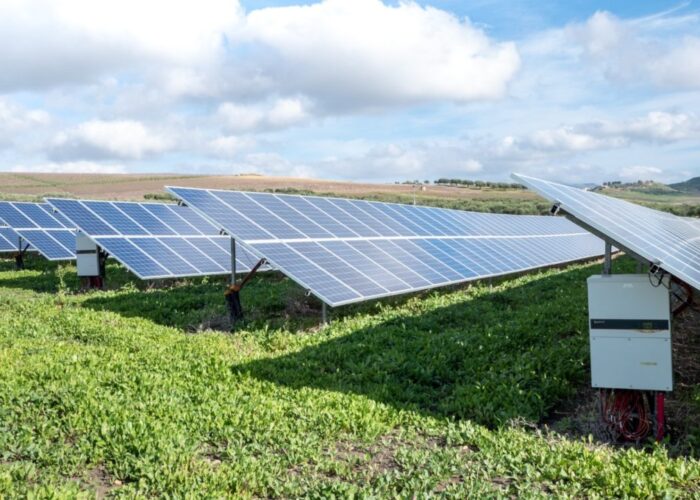Non-silicon mono wafer costs are plummeting and could challenge the predominance of monocrystalline silicon wafers, according to the head of a leading Chinese wafer producer.
Although the 2014 edition of the International Technology Roadmap for Photovoltaic (ITRPV) said monocrystalline silicon (mono-Si) wafers were predicted to account for around 50% of the crystalline silicon market by 2024, LONGi Silicon Materials Corp’s chairman, Zhenguo Li, told PV Tech during SNEC 2014 that demand for non-silicon mono is leading to significant capacity expansions.
Unlock unlimited access for 12 whole months of distinctive global analysis
Photovoltaics International is now included.
- Regular insight and analysis of the industry’s biggest developments
- In-depth interviews with the industry’s leading figures
- Unlimited digital access to the PV Tech Power journal catalogue
- Unlimited digital access to the Photovoltaics International journal catalogue
- Access to more than 1,000 technical papers
- Discounts on Solar Media’s portfolio of events, in-person and virtual
LONGi, a dedicated mono-Si wafer producer located in China plans to expand capacity to 3GW by the end of 2014 to meet expected demand that will lead to a further 1GW of added capacity in 2015, Li told PV Tech.
“LONGi believes that mono has lower cost per kilowatt hour compared with that of multi [c-Si], even in China where installation cost is lower than that of other markets,” noted Li. “However, due to historical reasons, major Chinese PV module plants have large multi capacity, therefore they always promote multi PV modules in the market. As a result multi module occupies most [of the] market.
The LONGi executive, a veteran of the semiconductor silicon materials industry, highlighted that key markets such as China, Japan, US and Europe are increasingly requiring high-performance mono-based modules as markets incentives decline and support shifts from ground-mount to rooftop (both commercial and residential) that require higher yielding modules and attributes of lower yield degradation provided by mono-based wafer/cells.
The move by the Chinese government to shift feed-in tariff support to distributed generation is also expected to shift module selection to mono over multi at a faster rate than previously expected.
However, the demand dynamics are only part of the story, according to Li. He noted that the company had been intensely focused for several years on reducing the non-silicon production costs for mono wafers, a key perennial problem compared to the cost reduction drives and massive capacity expansions seen for multi wafers in the same timeframe.
“During the past several years, LONGi has issued 95 patents and patent application rights and introduced 10 non-patent technology innovations, including industry leading transverse magnetic field pulling technology, mono-crystalline modification technology, mono-crystalline crystal puller thermal shield technology, recharge technology and diamond wire slicing technology etc…,” added Li.
Such developments have resulted in improved productivity of new and existing production equipment, while reducing labour costs but increasing overall yield and quality.
Significant improvements have been made reducing overall cycle times with higher ingot pulling speeds while moving to larger and longer ingots. Increased mono-based module demand is enabling further non-silicon cost reductions due to the economies of scale.
As a result, the LONGi executive highlighted the competitive cost structure of mono wafers to multi that would seriously impact future wafer product market mix.
Li noted that only three years ago, non-silicon mono production costs stood at US$0.20/W to US$0.25/W, compared to multi wafer non-silicon production costs of between US$0.17/W to US$0.18/W.
Currently, according to Li, the gap has closed significantly with LONGi claiming mono costs of US$0.12/W while average multi costs are around US$0.10/W.
The cost disparity is set to diminish further, as Li cited its cost reduction roadmap for mono non-silicon cost reductions hitting between US$0.06/W to US$0.07/W in the next three years.
Although production cost reductions were said to have been critical, looking downstream to the improving benefits of mono modules would also play an important part on the resurgence in mono wafer usage.
“Because mono cell and module have high efficiency, mono installation cost savings are significant and mono has advantage in ground and distributed power plants,” noted Li. “Integrating the contribution of PV system changeable cost and actual power premium, mono wafer contributes US$0.48 to US$0.789 more than multi – wafer, [which] further exceeds the price difference (~0.29$, 2013/4) between mono-wafer and multi-wafer.
According to Li, there is also a widespread industry misunderstanding in relation to high efficiency N-type mono wafer manufacturing costs to that of P-type mono production costs.
The LONGi chairman said that the cost is not high as widely perceived as the company has mature N-type mono production equipment and technology that can also be utilised for both types of mono wafer production with non-silicon cost difference of less than 10%.
“With the increase of N-type mono demand, the cost difference will decrease with N-type capacity enlargement,” added Li.
Li said he was convinced that the adoption of mono wafers would increase significantly in the coming years, kicking off in 2014 as an increasing number of solar cell manufacturers look to increase mono cell production after several years of holding back both R&D and capacity expansions for mono-based products.
“The spring of mono is coming,” concluded Li.







